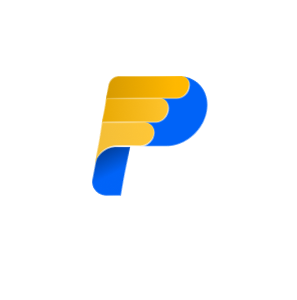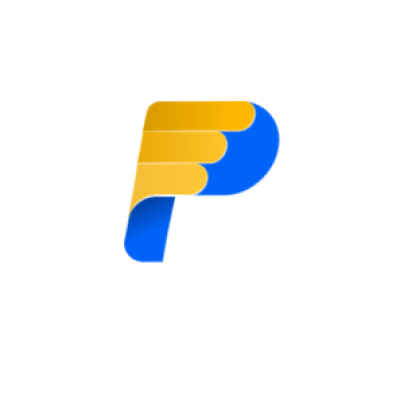In gym operations, the point of sale (POS) system software has evolved far beyond a simple tool for processing transactions. It now functions as the central hub for a fitness facility’s entire operational and financial ecosystem. The days of using separate, disconnected software for billing, class scheduling, and retail sales are being replaced by integrated platforms where the gym POS system software is the core component. This shift transforms the front desk from a mere payment station into a powerful data collection point.
A modern gym POS system connects every member interaction—from their initial sign-up and recurring membership payments to class bookings, personal training session purchases, and retail sales of supplements or apparel. This integration creates a unified stream of data that provides a complete picture of member behavior and business performance. The direct impact on the member experience is significant. A fluid and efficient transaction process for any purchase, whether it’s a new membership or a post-workout protein shake, improves member satisfaction and minimizes friction at the front desk.
For gym owners and staff, the operational benefits are substantial. An integrated POS system automates billing cycles, reduces the administrative workload associated with manual data entry, and improves the accuracy of financial reporting. This automation allows staff to dedicate more time to member interaction and service, which is a critical factor in building a strong community.
Furthermore, the data gathered by the POS system is a foundational element of a successful member retention strategy. By tracking member purchases, class attendance patterns, and check-in frequency, the system can identify members whose engagement is declining. This information can then be used by integrated customer relationship management (CRM) tools to trigger automated, targeted outreach campaigns. For instance, a member who has not attended a class in 30 days could automatically receive an email with a special offer or a personal note from a trainer, a process that begins with the data captured at the point of sale. This capability turns the POS system into a proactive tool for maintaining the long-term revenue stability of the gym.
The consolidation of sensitive member data—including names, contact details, and payment card information—within a single system also elevates the importance of data security. A gym POS system is not just an operational tool; it is a vault containing the personal and financial information of every member. A security breach could result in severe financial penalties, legal liabilities, and lasting damage to the gym’s reputation. Therefore, selecting a POS provider requires a careful evaluation of their security protocols, such as PCI compliance, reframing the decision as a critical exercise in risk management.
Evaluating Your Options: Key Features of a High-Performing Gym POS System
Selecting the right POS system for a fitness center requires a detailed analysis of its features. A high-performing gym POS should function as more than a payment processor; it must integrate with every facet of the business to support growth and improve the member experience. Here are the essential features to evaluate.
Integrated Payment Processing & Hardware
The primary function of any POS system is to handle transactions securely and efficiently. For a gym, this means accepting a wide variety of payment methods, including credit cards, debit cards, and digital wallets like Apple Pay. The system should be supported by reliable and integrated hardware, such as barcode scanners for retail items and EMV-compliant card readers for secure payments. Payment processing fee structures must be transparent. Some providers, like Square, offer a clear flat-rate model (e.g., 2.6% + 15¢ per transaction), which simplifies cost forecasting for gym owners.
Membership and Billing Automation
Automated management of recurring revenue is the financial backbone of most gyms. A capable gym POS system must automate recurring billing for monthly and annual memberships, handle failed payment notifications, and automatically retry declined transactions to minimize revenue loss. The system should also provide the flexibility to create various membership types, such as class packs, drop-in passes, and family plans. Additional features like the ability to freeze memberships and generate automated invoices for corporate clients are also valuable.
Retail and Inventory Management
Many fitness centers generate significant revenue from the sale of merchandise, supplements, and concessions. The POS system must be equipped to manage these retail operations effectively. This includes features for tracking inventory levels in real-time, generating low-stock alerts to prevent stockouts, and providing detailed sales reports that show which products are performing well. This data allows gym owners to make informed purchasing decisions and optimize their retail offerings.
Class and Appointment Scheduling Integration
A gym POS system cannot operate in a vacuum. It must integrate seamlessly with the facility’s class and appointment scheduling software. This integration ensures that when a member books a class or a personal training session, the payment and attendance records are automatically updated across the entire system. A system that lacks deep integration can create significant operational friction. For example, if the POS and scheduling systems are separate, staff may need to manually update a member’s payment status in the scheduler after a transaction is completed in the POS. This manual reconciliation consumes valuable staff time and can lead to errors, such as allowing a member with a failed payment to continue booking classes. A fully integrated system avoids these issues, reducing hidden labor costs and preventing a disjointed experience for both members and staff.
Reporting and Business Analytics
Data-driven decision-making is essential for long-term success. A high-performing gym POS system provides detailed analytics and customizable reports on key business metrics. Gym owners need access to reports on sales trends, revenue broken down by source (memberships, retail, personal training), member attendance patterns, and client retention rates. These analytics provide the necessary information to make strategic decisions regarding class schedules, staffing levels, marketing promotions, and inventory management.
Member-Facing Mobile App Functionality
In today’s digital environment, a mobile app for members is becoming a standard expectation. The POS system should support a member-facing app that allows clients to book classes, purchase services, update their payment information, and manage their accounts from their smartphones. This self-service capability not only improves convenience for members but also reduces the administrative burden on front-desk staff. A fully branded app further enhances the member experience and reinforces the gym’s brand identity.
The 12 Best Gym Point of Sale (POS) Systems in 2025: A Detailed Analysis
Choosing the right gym POS system is a critical decision that impacts every aspect of a fitness business. The following is a detailed analysis of 12 of the top gym point of sale software options available in 2025, examining their features, pricing, and ideal use cases to help gym owners make an informed choice.
1. Exercise.com
Overview: Exercise.com is positioned as a premium, all-in-one fitness business management platform. It is designed for gyms and fitness professionals who require a high degree of customization and a fully branded digital presence for their members. The platform integrates every aspect of the business, from sales and billing to workout delivery and member engagement.
Key POS & Management Features:
- Integrated POS System: Seamlessly processes payments for memberships, classes, personal training, and retail items.
- Custom-Branded Mobile Apps: Provides fully branded apps for both members and staff on iOS and Android, creating a consistent brand experience.
- Comprehensive Business Management: Includes tools for member management, class booking, staff scheduling, automated billing, and multi-location reporting.
- Workout Creation & Delivery: Offers a workout plan creator, exercise library, and performance tracking tools, allowing trainers to deliver personalized programming directly through the app.
- Advanced Automations: Features a robust automation engine for marketing, member engagement, and administrative tasks.
Pricing Structure: Exercise.com utilizes a custom pricing model. Prospective customers must request a demo to receive a quote tailored to their business size and needs. This approach suggests a higher price point aimed at established businesses or those prioritizing significant growth.
| Pros | Cons |
| Unmatched customization for apps and web portals | Higher entry price compared to some competitors |
| Truly all-in-one platform combines POS with workout delivery | No free trial available; requires a demo for evaluation |
| Highly praised for dedicated customer support and onboarding | May have more features than a very small or new gym needs |
| Scalable for multi-location and enterprise-level businesses |
Best For: Established gyms, multi-location fitness centers, and high-performance training facilities that require a fully customized, end-to-end platform and are prepared to invest in a premium solution.
2. Mindbody
Overview: Mindbody is one of the most well-known software platforms in the wellness industry. It is particularly strong in the boutique fitness sector, including yoga, Pilates, and spa services. A key feature is its large consumer-facing marketplace, which can serve as a lead generation tool for listed businesses.
Key POS & Management Features:
- Integrated POS: Handles retail sales, class bookings, and membership payments with compatible hardware options.
- Advanced Scheduling: Manages complex class schedules, appointments, and workshops.
- Marketing Automation Suite: Offers powerful tools for creating automated email and text campaigns to engage clients and convert leads.
- Mindbody App Marketplace: Lists the business on the Mindbody consumer app, exposing it to a large network of potential new clients.
- Detailed Reporting: Provides analytics on sales, client retention, and revenue to inform business decisions.
Pricing Structure: Mindbody uses a tiered pricing model with plans ranging from approximately $129 to $699 or more per month. Many of the more advanced features, such as marketing automation and a branded mobile app, are only available in the higher-priced tiers.
| Pros | Cons |
| Large consumer marketplace can drive new client acquisition | User reviews frequently cite a complex and outdated interface |
| Powerful, built-in marketing and lead management tools | Often requires a long-term contract (e.g., 12 months) |
| Scalable for large wellness centers and multi-location businesses | Customer support for lower-tier plans is often criticized |
| Comprehensive feature set for scheduling and payments | Numerous complaints regarding billing practices and glitches |
Best For: Yoga studios, Pilates studios, spas, and large wellness centers that can benefit from the consumer marketplace and require sophisticated marketing automation tools.
3. Zen Planner
Overview: Zen Planner is a gym management software tailored for fitness businesses with structured class environments, such as CrossFit, martial arts, and yoga studios. It offers specialized features for these niches alongside strong core functionalities for member management and billing.
Key POS & Management Features:
- Integrated POS: Processes payments for memberships, drop-ins, and retail items.
- Automated Billing: Manages recurring payments, sends automated reminders, and tracks financials.
- Specialized Tracking: Includes features for tracking belt and skill progression in martial arts, a key differentiator.
- Workout Tracking: Integrates with SugarWOD to provide workout tracking and performance logging for members.
- Member & Staff Apps: Provides mobile apps for both members (to book classes and pay bills) and staff (for attendance tracking and member management).
Pricing Structure: Zen Planner’s pricing starts at $99 per month and scales based on the number of active members. Additional modules for a custom website ($99/month) and advanced marketing automation ($249/month) are available as add-ons.
| Pros | Cons |
| Niche features like belt tracking are ideal for martial arts schools | User interface is described by some as “ugly and overly complex” |
| Strong reputation for responsive and helpful customer support | Some core features are considered outdated compared to competitors |
| Member-based pricing is transparent and predictable | Advanced marketing and website tools require expensive add-ons |
| Seamless integration with SugarWOD for workout tracking | Some users report the multitude of options can be overwhelming |
Best For: CrossFit affiliates, martial arts schools, and yoga studios that require specialized tracking features and value strong customer support.
4. ABC Glofox
Overview: ABC Glofox is a gym management platform designed for boutique fitness studios and franchises. It emphasizes a modern user interface, a polished member-facing app, and powerful tools for lead generation and sales conversion.
Key POS & Management Features:
- Integrated POS: Manages transactions for memberships, class packs, and retail products.
- Lead Management & Sales Funnels: Provides tools to capture, nurture, and convert leads through automated communication workflows.
- Branded Mobile App: Offers a highly-rated, custom-branded mobile app for members to book classes and manage their accounts.
- Multi-Location & Franchise Tools: Built to support the growth of multi-location businesses and franchises with centralized reporting and management.
- Reporting & Analytics: Delivers insights into business performance, member behavior, and sales pipeline effectiveness.
Pricing Structure: ABC Glofox does not publish its pricing publicly. Gym owners must request a demo to get a custom quote. User reviews often mention that the pricing is not transparent and that many key features are treated as upsells or add-ons, which can increase the total cost significantly.
| Pros | Cons |
| Modern, user-friendly interface for both staff and members | Pricing is not transparent and often requires negotiation |
| Powerful tools for lead generation and sales automation | Frequent complaints about upsells for essential features |
| Highly-rated branded mobile app enhances member experience | Some users report software glitches and system lag |
| Strong features for managing franchises and multiple locations | Sudden and significant price increases have been reported |
Best For: Fast-growing boutique fitness studios and franchises that prioritize sales automation and a premium, modern mobile experience for their members.
5. PushPress
Overview: PushPress was created by gym owners with a focus on the functional fitness community. Its main appeal is its scalable model, which includes a free plan, making it an accessible entry point for new or small gyms. The company is highly regarded for its customer-centric approach and support.
Key POS & Management Features:
- Simple POS: A straightforward point of sale system for handling drop-ins, memberships, and retail sales.
- Automated Billing: Manages recurring memberships and payments efficiently.
- Suite of Apps: Offers separate, dedicated apps for members, staff, and displaying schedules/workouts on a TV screen (Screens App).
- PushPress Grow: A powerful add-on that provides a full CRM and marketing automation system to manage leads and improve member retention.
- Free Plan: Offers a free-to-use version of its core software for gyms just starting out.
Pricing Structure: PushPress offers a Free plan with no monthly fee but higher payment processing rates (4.19% + $0.30 for credit cards). Its paid plans, Pro ($159/month) and Max ($229/month), offer significantly lower processing fees and additional features.
| Pros | Cons |
| Free plan provides an excellent entry point for new gyms | Transaction fees on the Free plan are high and can be costly at scale |
| Customer support is consistently praised as being responsive and helpful | Advanced features (CRM, branded app) require paid add-ons |
| Built by gym owners, so it addresses common pain points effectively | The multi-app setup (member, staff, screens) can feel disjointed |
| Scalable pricing model that grows with the business | Workout programming features in the core product are basic |
Best For: New and small-to-mid-sized functional fitness gyms and CrossFit boxes that need an affordable, user-friendly starting point with the option to add more powerful tools as they grow.
6. ClubReady
Overview: ClubReady is a comprehensive management platform designed for larger, established fitness studios and multi-location franchises. It provides deep operational control, advanced performance tracking, and extensive reporting capabilities tailored for scaling businesses.
Key POS & Management Features:
- Centralized POS: Manages all transactions, including member registrations, renewals, and retail sales, across single or multiple locations.
- Performance Tracking: The higher-tier plans offer tools to monitor client progress and performance, which is valuable for results-oriented studios.
- Lead & Sales Management: Includes a full CRM to track leads from initial contact through to conversion, with tools for follow-up and sales team management.
- Franchise Management: Provides corporate-level dashboards, royalty management, and brand-wide reporting for franchise networks.
- Advanced Reporting: Delivers in-depth analytics on every aspect of the business, from financial performance to member engagement.
Pricing Structure: ClubReady uses a tiered pricing structure with four main packages: Launch ($149/month), Velocity ($299/month), Eclipse ($399/month), and Orbit ($499/month). Critical features like automation and performance tracking are locked behind the more expensive tiers, making the entry-level plan quite basic.
| Pros | Cons |
| Highly scalable for large studios and multi-location franchises | Key features are locked in expensive higher-tier plans |
| Strong reporting and analytics provide deep business insights | User interface is sometimes described as dated or non-intuitive |
| Comprehensive tools for lead and sales management | Lacks built-in nutrition and workout creation tools |
| Praised for its helpful and integrated customer support team | Can be more expensive than other solutions with similar features |
Best For: Large fitness studios, health clubs, and well-established franchises (like CycleBar and Club Pilates) that require a robust, scalable platform for managing complex operations across multiple locations.
7. GymMaster
Overview: GymMaster is an all-in-one gym management software best known for its tightly integrated 24/7 door access control system. It provides a complete solution for facilities where automated, secure member access is a primary operational requirement.
Key POS & Management Features:
- Integrated POS: A touch-screen point of sale system for managing product sales, inventory, and member payments.
- 24/7 Door Access Control: Offers a proprietary hardware and software solution for automated, secure gym access using key fobs or a mobile app. This system can automatically block access for members with unpaid balances.
- Automated Billing: Manages recurring payments, invoicing, and payment processing.
- Member App & Portal: Allows members to book classes, manage their accounts, and even open doors with their phone.
- Full CRM & Marketing Tools: Includes tools for member communication, lead management, and automated engagement for at-risk members.
Pricing Structure: GymMaster’s pricing is tiered based on the number of active members. The Foundation plan starts at $89/month for up to 100 members. The Advanced plan is $129/month for up to 400 members, and the Professional plan is $209/month for up to 1,300 members. Door access control hardware is an additional cost.
| Pros | Cons |
| Seamless, built-in 24/7 door access control is a key differentiator | Accounting and payroll features are considered basic |
| Highly praised for user-friendliness and excellent customer support | The user interface may feel less modern than some competitors |
| Transparent pricing based on member count is easy to understand | Door access hardware represents an additional upfront cost |
| Comprehensive feature set covers most gym operational needs |
Best For: 24/7 gyms, key-fob access clubs, and any fitness facility where automated and secure member access control is a top priority.
8. WellnessLiving
Overview: WellnessLiving is a comprehensive business management platform that directly competes with Mindbody. It offers a wide array of features with a strong focus on marketing, client review management, and integrated loyalty programs to improve member retention.
Key POS & Management Features:
- POS & Payment Processing: Manages sales of services and products with integrated credit card processing.
- Advanced Marketing Automation: Create and schedule email, text, and push notification campaigns to nurture leads and engage existing members.
- Client Review Management: Includes tools to prompt clients for reviews and syndicate them to Google, helping to build online reputation.
- Integrated Rewards & Loyalty Program: A built-in program to reward members for attendance, referrals, and purchases, designed to increase retention.
- Dedicated Staff and Client Apps: Provides the Elevate™ app for staff and the Achieve™ app for clients to manage schedules and bookings.
Pricing Structure: WellnessLiving offers tiered plans: Starter ($69/month), Business ($199/month), and BusinessPro ($349/month). The Starter plan is highly limited, with support for only one staff member, effectively pushing most businesses toward the more expensive tiers.
| Pros | Cons |
| Powerful, built-in tools for marketing, reviews, and loyalty | The entry-level plan is too limited for most businesses |
| Generally more affordable than its direct competitor, Mindbody | Some user reviews report billing issues and poor support experiences |
| Praised for its comprehensive feature set and ease of use | Key features like a branded app are often paid add-ons |
| Offers free data migration for businesses switching platforms | Can become expensive with add-ons and higher tiers |
Best For: Fitness studios of all sizes that place a high priority on automated marketing, building a strong online reputation through reviews, and implementing a member loyalty program.
9. TeamUp
Overview: TeamUp is a fitness management software that focuses on simplicity, ease of use, and outstanding customer support. It is designed primarily for class-based businesses like boutique studios and independent trainers who need a reliable and intuitive system without unnecessary complexity.
Key POS & Management Features:
- POS Functionality: Allows for in-person payments for memberships, class packs, and drop-ins.
- Flexible Memberships: Easily create and manage various membership types, including recurring plans, class packs, and courses.
- Online Booking & Waitlists: A clean and simple interface for members to book classes online, with automated waitlist management to keep classes full.
- Strong Integrations: Connects with major payment processors like Stripe and GoCardless, and integrates with thousands of other apps via Zapier for extended functionality.
- Detailed Reporting: Provides easy-to-understand reports on attendance, revenue, and member activity.
Pricing Structure: TeamUp’s pricing is based on the number of active customers per month, starting at $99/month for up to 100 customers. All core features are included in every plan, so there are no upsells for essential functionality.
| Pros | Cons |
| Simple, transparent pricing model with all features included | Lacks the built-in, advanced marketing automation of competitors |
| Highly praised for its intuitive, user-friendly interface | May not be robust enough for large, multi-location franchises |
| Consistently receives excellent reviews for customer support | Waiver/form creation tools are considered basic by some users |
| Free data migration service makes switching easy |
Best For: Boutique fitness studios, independent personal trainers, and class-based gyms that value a straightforward, reliable, and user-friendly system with exceptional customer support.
10. Square
Overview: Square is a leading payment processing company that has expanded its offerings to include a comprehensive suite of business tools, including Square Appointments for service-based businesses like gyms. Its primary advantage is a free, easy-to-use POS system that makes it an attractive option for new and small fitness businesses.
Key POS & Management Features:
- Free POS App: Square’s core POS software is free to use, with no monthly fees for the basic plan.
- Integrated Payments: Offers simple, flat-rate payment processing that is easy to understand.
- Appointment & Class Scheduling: Square Appointments allows for booking one-on-one sessions and group classes.
- Online Booking Site: Provides a free, customizable online booking site for clients to schedule services 24/7.
- Business Management Ecosystem: Integrates with other Square tools for marketing, loyalty programs, payroll, and online sales.
Pricing Structure: Square Appointments offers a Free plan with no monthly fee and a processing rate of 2.6% + 15¢ for in-person transactions. Paid plans, Plus ($29/month) and Premium ($69/month), offer more advanced features like class booking and waitlists, along with slightly lower processing fees.
| Pros | Cons |
| Free entry-level plan makes it accessible for new businesses | Lacks gym-specific features like workout tracking or 24/7 access |
| Simple, transparent, flat-rate payment processing | Can become more expensive than dedicated gym software as sales volume increases |
| Easy to set up and use, with a familiar interface | Core gym management functionalities are not as deep as specialized platforms |
| Part of a large ecosystem of integrated business tools |
Best For: Independent personal trainers, small yoga or Pilates studios, and new gym owners who need a simple, low-cost solution for accepting payments and managing basic scheduling.
11. Wodify
Overview: Wodify is a leading software platform in the CrossFit community, designed specifically to support the methodology of functional fitness gyms. Its core strengths lie in performance tracking, digital whiteboards, and fostering a sense of community through leaderboards and workout logging.
Key POS & Management Features:
- POS System: Manages payments for memberships, drop-ins, and retail.
- Performance Tracking (Wodify Perform): Allows members to log their workout results, track progress over time, and view their history. This is a central feature of the platform.
- Digital Whiteboard & Leaderboards: Displays daily workouts and member results in the gym, fostering competition and community.
- Class Scheduling: Manages class schedules, reservations, and attendance tracking.
- AI-Powered Retention Tools: Includes features to identify at-risk clients based on their attendance and engagement data.
Pricing Structure: Wodify offers tiered plans starting with Essentials at around $79/month. More advanced plans, Accelerate and Ultimate, add features like lead management and a branded website. The key performance tracking module, Wodify Perform, is often an add-on for lower-tier plans.
| Pros | Cons |
| Deeply integrated with CrossFit and functional fitness methodologies | User experience can be polarizing; some Reddit users express strong dissatisfaction |
| Excellent performance tracking and community engagement features | Key features like performance tracking may require add-on fees |
| Strong tools for class scheduling and member management | May be overly complex for gyms not focused on performance tracking |
| Client-centric company with a good support team |
Best For: CrossFit affiliates and functional fitness gyms where daily workout tracking, performance logging, and community leaderboards are central to the member experience.
12. Pike13
Overview: Pike13 is a flexible and reliable software platform that excels at managing complex schedules for appointment-based and class-based businesses. While not exclusively for fitness, it is widely used by personal training studios, swim schools, and other facilities that require detailed client management and scheduling.
Key POS & Management Features:
- POS and Billing: Processes payments for services and automates recurring billing for plans and memberships.
- Advanced Scheduling: Manages a wide range of scheduling needs, from one-on-one appointments to multi-session courses and group classes.
- Client Management: Maintains detailed client profiles with notes, attendance history, and payment information.
- Mobile Accessibility: Provides staff and clients with mobile access to manage schedules and accounts on the go.
- Reporting: Offers insights into revenue, attendance, and other key business metrics.
Pricing Structure: Pike13’s pricing starts at around $159 per month for its Essential plan. It also offers Advanced and Premium plans with more features at higher price points. Pricing details can sometimes lack full transparency, requiring direct contact for a precise quote.
| Pros | Cons |
| Strong capabilities for managing complex appointment schedules | Lacks deep, fitness-specific features like workout programming |
| User-friendly interface for both staff and clients | Pricing can be less transparent than some competitors |
| Reliable platform for client and schedule management | May be more expensive than other options for basic needs |
| Flexible enough for various types of service-based businesses |
Best For: Personal training studios, swim schools, and other appointment-heavy fitness businesses that need a powerful and reliable scheduling and client management system.
Gym POS Software: A Comparative Feature Matrix
To simplify the selection process, this matrix provides a high-level comparison of the top contenders based on critical features for a fitness facility. This allows for a quick assessment of which platforms align with specific business priorities.
| Software | Best For (Summary) | Pricing Model | Integrated POS Hardware | Custom-Branded App | 24/7 Door Access | Built-in Workout Programming | Advanced Marketing Automation | Free Plan |
| Exercise.com | Customization & Growth | Custom | Yes | Yes | Yes | Yes | Yes | No |
| Mindbody | Boutique Studios & Wellness | Tiered (Features) | Yes | Add-on | No | No | Yes | No |
| Zen Planner | CrossFit & Martial Arts | Tiered (Members) | Yes | Add-on | Via Integration | Via Integration | Add-on | No |
| ABC Glofox | Boutique Studios & Franchises | Custom | Yes | Yes | No | No | Yes | No |
| PushPress | New & Small Functional Gyms | Free + Fees / Tiered | Yes | Add-on | No | Basic | Add-on | Yes |
| ClubReady | Large Studios & Franchises | Tiered (Features) | Yes | Yes | No | No | Yes | No |
| GymMaster | 24/7 Access Gyms | Tiered (Members) | Yes | Yes | Yes | Yes | Yes | No |
| Square | Independent Trainers & Startups | Free + Fees / Tiered | Yes | No | No | No | Add-on | Yes |
How to Select the Right POS System for Your Fitness Center
Choosing a gym POS system is a significant investment that will shape your daily operations and member experience for years to come. A systematic approach is required to ensure the selected platform aligns with your business’s specific needs and future goals.
Step 1: Assess Your Gym’s Unique Operational Needs
First, clearly define your business model. Are you primarily a class-based facility like a CrossFit box or yoga studio, where managing schedules and waitlists is paramount? Or are you an appointment-based business, such as a personal training studio, where individual calendar management is the priority? Perhaps you run a 24/7 open gym where secure access control is non-negotiable. Create a list of “must-have” features versus “nice-to-have” features based on your model. This initial assessment will immediately help you narrow down the field of potential candidates.
Step 2: Align Software Costs with Your Business Budget
Evaluate the total cost of ownership (TCO), not just the monthly subscription fee. This includes payment processing fees, the cost of required hardware (card readers, scanners), and any additional fees for essential add-on modules. Be wary of “free” plans that come with high transaction fees. While attractive initially, a free plan from a provider like PushPress or Square can become more expensive than a paid subscription plan once your transaction volume grows. A system with transparent, predictable pricing will make financial planning much easier in the long run.
Step 3: Plan for Future Growth and Scalability
Select a system that can support your business not just today, but also in the future. If you plan to open multiple locations, ensure the software has robust multi-location management and reporting capabilities. If you intend to expand into online coaching, choose a platform with built-in tools for workout delivery and digital product sales. A low-cost solution that meets your current needs might become a significant operational bottleneck if it cannot scale with your business, forcing a costly and disruptive migration to a new system later on.
Step 4: Prioritize the Member and Staff Experience
A powerful system is ineffective if no one can use it properly. Prioritize a platform with a clean, intuitive interface for both your staff and your members. A complicated system can lead to staff frustration, data entry errors, and low adoption of the member-facing mobile app. Before making a final decision, schedule demos with your top two or three contenders. Involve your key staff members in the demo process to get their feedback. Additionally, consult third-party review sites like G2 and Capterra, as well as community forums like Reddit, to gather unfiltered opinions on usability, reliability, and the quality of customer support.
Frequently Asked Questions about Gym POS Systems
What is a gym POS system?
A gym point of sale (POS) system is a combination of software and hardware that allows a fitness facility to process transactions. Modern gym POS systems are much more than payment processors; they are integrated platforms that also manage recurring membership billing, class and appointment scheduling, retail inventory, and member data, serving as the central hub for the entire business.
How much does a gym POS system cost?
The cost of a gym POS system varies widely based on the provider and the features included. Pricing models typically fall into one of four categories:
- Free with Transaction Fees: Systems like Square and PushPress offer a free software plan but charge a higher percentage per transaction (e.g., 2.6% – 4.2%).
- Tiered by Member Count: Systems like Zen Planner and GymMaster charge a monthly fee that increases as your number of active members grows.
- Tiered by Features: Systems like Mindbody and ClubReady offer multiple subscription tiers, with more advanced features locked behind the more expensive plans.
- Custom Pricing: Premium, all-in-one platforms like Exercise.com provide custom quotes based on the specific needs of the business.
Can I use a general retail POS like Square for my gym?
Yes, a general retail POS like Square can be used for a gym, especially for new or small operations with simple needs. Square Appointments offers basic scheduling and payment processing at a low entry cost. However, dedicated gym management software provides critical, integrated features that general POS systems lack, such as automated recurring membership billing, waitlist management, 24/7 door access control, and workout tracking.
What is the most important feature in a POS system for a fitness center?
While the most important feature depends on the specific business model, for the vast majority of gyms, integrated and automated membership billing is the most critical function. The ability to automatically process recurring monthly or annual dues, handle failed payments, and manage different membership types is the financial engine of the business.
Do I need a POS system with a custom-branded app?
A custom-branded app is becoming an increasingly important feature. It provides a professional and seamless experience for members, allowing them to book classes, make payments, and track their progress within an environment that reinforces your brand identity. It also improves member engagement and can reduce the administrative workload for your front-desk staff.
How does a gym POS handle different membership types?
A capable gym POS system provides the flexibility to create and manage a wide variety of membership options. This typically includes setting up recurring monthly and annual memberships with automated billing, selling multi-class packs or punch cards that automatically track usage, and processing one-time payments for drop-in classes or guest passes.








